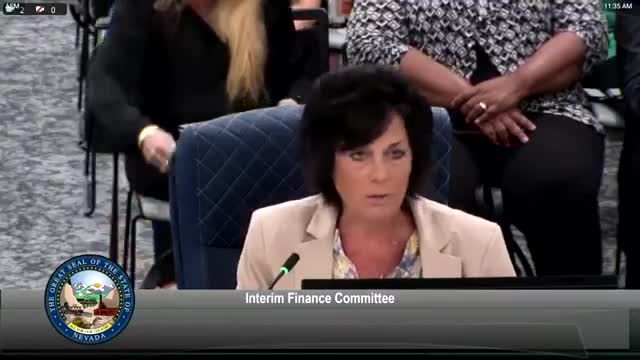School districts report SB231/AB398 teacher and staff pay changes improved retention; some leftover funds due to unfilled positions
October 17, 2025 | 2025 Legislature NV, Nevada
This article was created by AI summarizing key points discussed. AI makes mistakes, so for full details and context, please refer to the video of the full meeting. Please report any errors so we can fix them. Report an error »

Superintendents and finance officers from Clark, Washoe, Elko, Esmeralda, Mineral and other Nevada districts briefed the Interim Finance Committee on Oct. 16 about how the SB231 (2023) and subsequent AB398 (2025) teacher and support staff funding was used and its effects.
Across the districts that presented, common themes emerged: the supplemental and salary increases helped retain staff and reduce unfilled classroom counts compared with prior years. Clark County said county‑wide teacher vacancies dropped sharply and that the district had a 94% retention rate at the start of the current school year; Washoe reported full expending of its SB231 allocation and improved classroom staffing and a modest enrollment gain. Several rural districts (Elko, Esmeralda, Mineral) reported persistent recruitment challenges tied to geographic isolation and housing, which led to small returned balances from SB231 because some positions were not filled during the funded period.
District leaders said they used the funds in line with legislative direction (flat supplements or negotiated contract items), and most funds were distributed through bargaining or district salary supplements. Superintendents emphasized continued recruitment efforts, grow‑your‑own programs and local housing incentives as complementary strategies. Several district leaders asked the committee to maintain predictable, multi‑year funding to sustain compensation improvements and further reduce churn.
Committee members thanked districts for on‑the‑ground reports and asked for follow‑up detail on how the funds were allocated per bargaining unit and how many positions remained unfilled at the start of the year in each district.
Across the districts that presented, common themes emerged: the supplemental and salary increases helped retain staff and reduce unfilled classroom counts compared with prior years. Clark County said county‑wide teacher vacancies dropped sharply and that the district had a 94% retention rate at the start of the current school year; Washoe reported full expending of its SB231 allocation and improved classroom staffing and a modest enrollment gain. Several rural districts (Elko, Esmeralda, Mineral) reported persistent recruitment challenges tied to geographic isolation and housing, which led to small returned balances from SB231 because some positions were not filled during the funded period.
District leaders said they used the funds in line with legislative direction (flat supplements or negotiated contract items), and most funds were distributed through bargaining or district salary supplements. Superintendents emphasized continued recruitment efforts, grow‑your‑own programs and local housing incentives as complementary strategies. Several district leaders asked the committee to maintain predictable, multi‑year funding to sustain compensation improvements and further reduce churn.
Committee members thanked districts for on‑the‑ground reports and asked for follow‑up detail on how the funds were allocated per bargaining unit and how many positions remained unfilled at the start of the year in each district.
View full meeting
This article is based on a recent meeting—watch the full video and explore the complete transcript for deeper insights into the discussion.
View full meeting